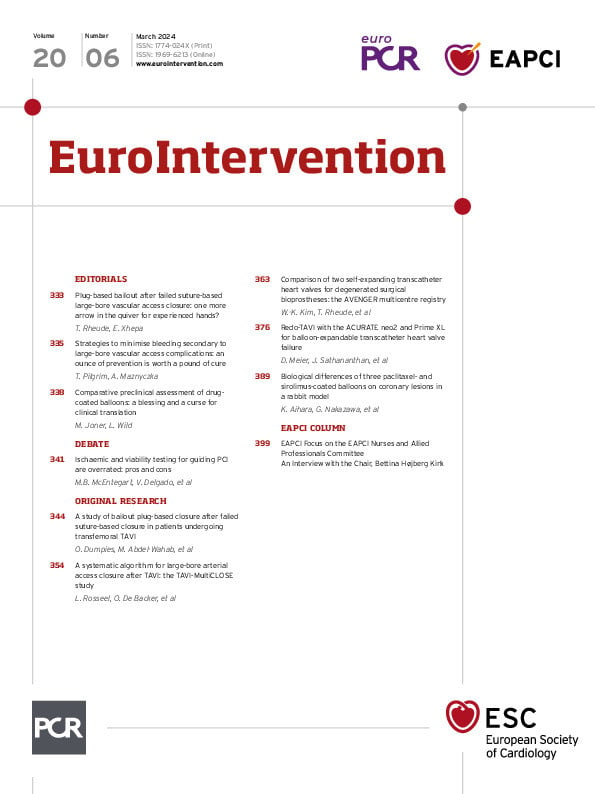What is the role of the Committee?
The mission of this EAPCI Nurses and Allied Professionals (NAPs) Committee is as follows:
• Identify areas of unmet needs in the EAPCI NAPs community and address specific issues by proposing relevant scientific documents
• Broaden the NAPs network within ESC countries and affiliates by enhancing involvement in Committee activities
• Update the NAPs curriculum and coordinate related educational activities
How does the EAPCI Nurses and Allied Professionals Committee benefit the community?
The EAPCI NAPs Committee has broadened its network within the community through outreach at conferences and national society meetings, as well as on social media. This has resulted in a doubling of EAPCI NAPs Committee members since I assumed my position as Chair of the Committee. A strategy for reducing barriers to communication in the community is important to enhance participation in the Committee’s activities. The NAPs Committee broadly represents ESC countries and affiliates, which is an advantage in addressing the needs of the community.
How does the Nurses and Allied Professionals Committee work with the other EAPCI Committees?
The NAPs Committee collaborates with other EAPCI Committees on clinical, educational, and scientific projects. This is based on our initiatives, such as a newly developed consensus document for the transcatheter heart valve (THV) clinical coordinator, which is an important initiative that can change clinical practice and patient-related outcomes in patients suffering from structural valve diseases. Another initiative is our offer to give feedback/be involved within a multidisciplinary approach, e.g., we are on the Advisory Board of the large European RESIL-Card Project. Furthermore, we have a strong collaboration with the PCR Board, developing and being responsible for executing the NAPs sessions at EuroPCR. Our shared mission is to serve the needs of each individual patient by helping the cardiovascular community to share knowledge, experience, and practice in cardiovascular interventional medicine and care.
What has been your Committee’s biggest achievement so far in this term?
Without a doubt, the development and launch of a 9-module online course provided on the ESC e-learning platform, offered as separated modules or a package of 50 hours of education. The course is based on the EAPCI Core Curriculum for Nurses and Allied Health Professionals.
The overall aim of the online course is to deliver a standardised educational program for all nurses and allied professionals working in a cath lab. In particular, the course aims to ‘bridge’ the educational gap between initial qualification as a nurse or allied professional and becoming a cath lab specialist, delivering the knowledge required for NAPs to work at a higher level in the cath lab setting. Attending the online course will allow NAPs to sit the NAP certification examination. It is a huge and ambitious project, involving about 50 people in the NAP community who have contributed by sharing their expertise and extensive knowledge
How are topics chosen for educational sessions, and how can EAPCI members contribute?
For the online course, the educational topics were driven by the Core Curriculum. In addition, new guidelines, upcoming procedures and interactions with peers in person or on social media have contributed to the creation of educational sessions. Outreach is essential to make NAPs aware of our work and for us to receive contributions from members. Our goal is to create interesting and practical sessions, by and for our members and colleagues globally.
How can EAPCI members become involved in the work of the Nurses and Allied Professionals Committee?
As Committee members, we represent different expertise and roles within interventional cardiology from various regions and countries. Sometimes, we need involvement from others with their specific knowledge and expertise. Also, we like to provide multidisciplinary collaboration, as different perspectives often reflect the clinical setting of our daily practices. We are always open to new ideas and projects, so please do not hesitate to contact us.

